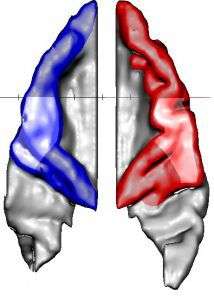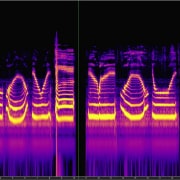Test Your Rhythm Feeling
On ConcertHotels you will find a test that measures your precision of rhythm feeling. Take the test first. Then try singing overtones while you’re doing the test and write your results in the comment below if you like. I look forward to it.

Enlarged right auditory cortex, Wolfgang Saus.
Overtones are usually sung slowly and meditatively, rarely fast and rhythmically (there are exceptions). Overtone singers process sound more in the right hemisphere, drummers more in the left, says Dr. Schneider from Heidelberg University Hospital. Test here how your brain processes sounds.
Is that one of the reasons? An interesting question that has not yet been examined. I suspect that focusing on overtones, at least for the untrained, draws attention away from rhythm.
In my advanced courses, I experience that at first the intonation and sound quality of the keynote suffers when the focus goes entirely to the overtones. Conversely, concentrating on the keynote causes a poorer overtone quality or even complete loss of control of overtone singing. I can immediately recognize from the sound what a student is concentrating on.
If you want to sing polyphonic overtones, i. e. a fundamental melody and an independent overtone melody at the same time, then both tones must receive equal attention. I have developed special exercises for this purpose, which improve the clean control of both notes after a few hours. It would be interesting to examine whether these exercises have an effect on the feeling of rhythm. I will do the rhythm test in my courses as a before-and-after comparison. I’m curious to see what happens.
What are your experiences with rhythm and overtones?







Leave a Reply
Want to join the discussion?Feel free to contribute!